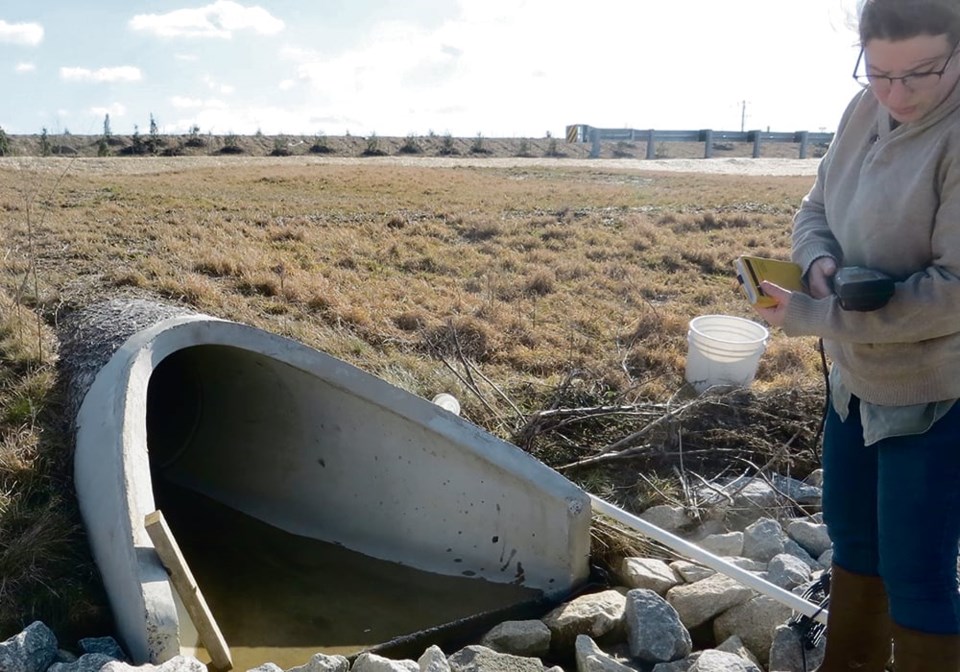WESTERN PRODUCER — To reduce hazardous winter driving conditions, highway departments turn to salt de-icers.
Does road salt affect groundwater? If so, is there a lasting impact that can be measured?
The Delaware Geological Survey is taking an in-depth look at groundwater quality.
Rachel McQuiggan, a researcher at the University of Delaware, is monitoring storm water and groundwater at infiltration basins — large, shallow roadside pools that allow water to infiltrate the groundwater.
Her research was published in the Journal of Environmental Quality, a publication of the American Society of Agronomy, Crop Science Society of America and Soil Science Society of America.
“Groundwater provides almost half of all drinking water worldwide,” says McQuiggan.
“In central and southern Delaware, groundwater is the only source of potable drinking water. The results of our research should encourage best management practices for de-icer to protect groundwater resources.
“Most storm water management practices are designed to protect surface waters,” says McQuiggan. “Infiltration basins, and even some types of green infrastructure, are designed with the idea that storm water benefits from a natural filtering of contaminants as it infiltrates through soil, and contaminants dilute as that recharge mixes with existing groundwater.”
She adds these basins are used to prevent contaminants like salt from being discharged straight into surface water. But in states like Delaware, groundwater contributes up to 80 percent of the water in rivers and streams. This means that salt will eventually reach rivers and streams.
To evaluate the impact road salt had on groundwater quality, McQuiggan monitored the target infiltration basin from mid-May 2019 to mid-February 2022. Her team saw that geological complexity, such as differences in subsurface soil properties, influenced how salty storm water moved through groundwater.
The team found that groundwater is impacted by road salt throughout the year, not just during winter. Salt is retained in the soil in the infiltration basin. Road salt is made of sodium and chlorine atoms and chloride, which moves easily in water. Sodium more latches onto soil particles.
Chlorine is found deep within the Earth’s crust. It is known for forming neutral salts such as potassium chloride, calcium chloride and sodium chloride, also known as table salt.
Outside of winter, storm water doesn’t contain much salt. It enters the basin and flushes sodium from the soil into the water. The study suggests a higher salt content can cause radium to enter the groundwater.
“Climate can really impact the timing of how this all plays out. For example, if it’s a particularly dry spring and summer, the sodium takes longer to reach groundwater. In Delaware, snowfall typically melts and runs off the roads within a few days of falling. In colder climates, it can stay frozen for months.”
There are other de-icers available, but they are not as effective as road salt. Each has its drawbacks. Sand is a popular option to increase traction and minimally affect groundwater, but it requires extra maintenance like street sweeping.
“There are even carbohydrate de-icers like beet juice. However, most alternatives are used in conjunction with salt or acetate because those are so effective. Road safety is incredibly important.”




